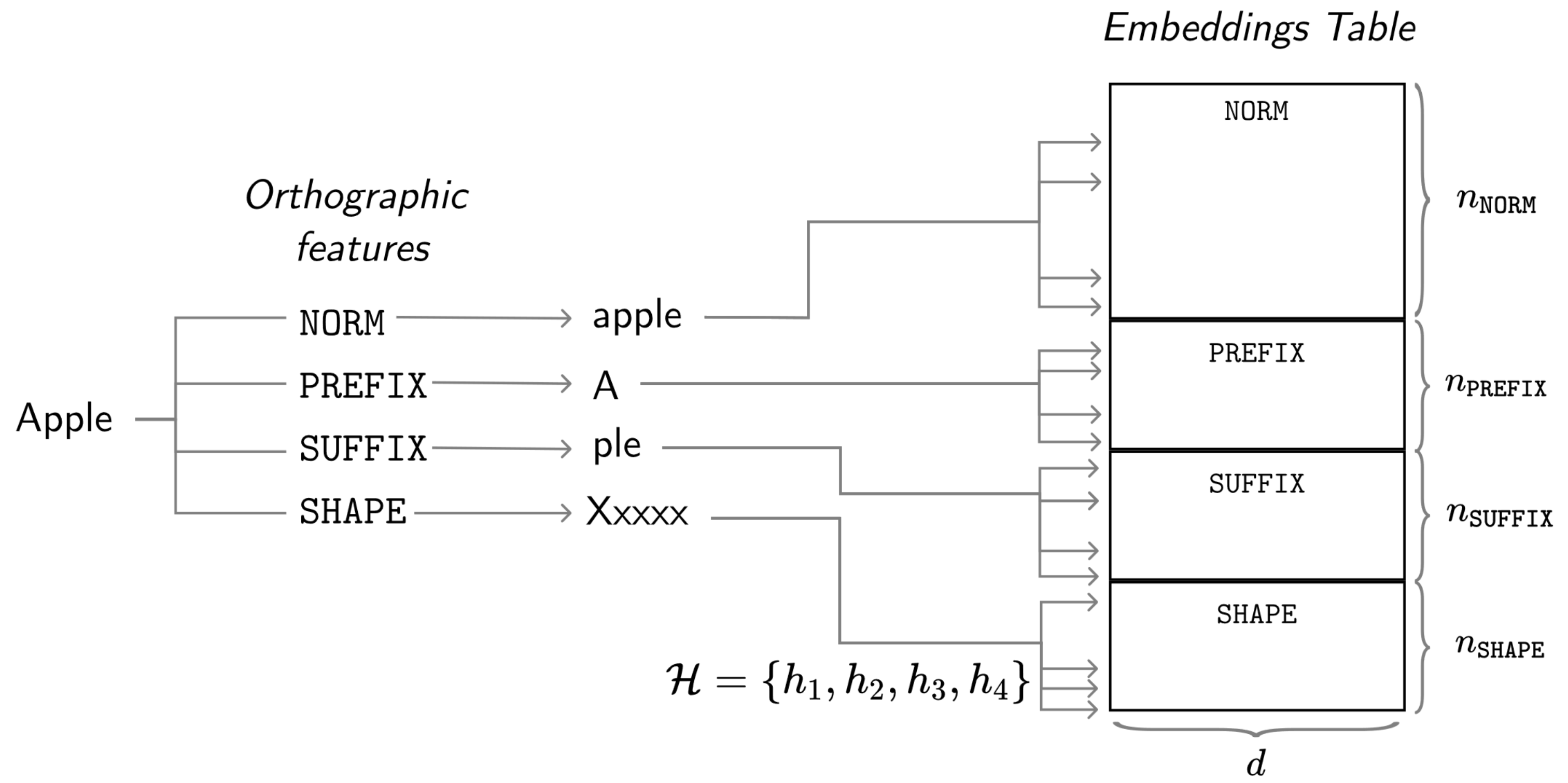The distributed representation of symbols is one of the key technologies in machine learning systems today, playing a pivotal role in modern natural language processing. Traditional word embeddings associate a separate vector with each word. While this approach is simple and leads to good performance, it requires a lot of memory for representing a large vocabulary.
To reduce the memory footprint, the default embedding layer in spaCy is a hash embeddings layer. It is a stochastic approximation of traditional embeddings that provides unique vectors for a large number of words without explicitly storing a separate vector for each of them. To be able to compute meaningful representations for both known and unknown words, hash embeddings represent each word as a summary of the normalized word form, subword information and word shape. Together, these features produce a multi-embedding of a word.
In this technical report we lay out a bit of history and introduce the embedding methods in spaCy in detail. Second, we critically evaluate the hash embedding architecture with multi-embeddings on Named Entity Recognition datasets from a variety of domains and languages. The experiments validate most key design choices behind spaCy’s embedders, but we also uncover a few surprising results.
→ Paper: Arxiv
→ Authors: Lester James Miranda, Ákos Kádár, Adriane Boyd, Sofie Van Landeghem, Anders Søgaard, Matthew Honnibal

